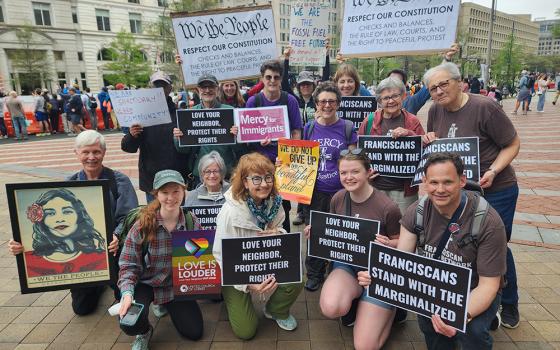In the final weeks leading up to the vote on health care reform, many pro-life groups raised concerns that the Community Health Centers funded by the bill would be able to provide abortions.
A press release from the Pro-Life Secretariat at the USCCB posed the question “As currently written, does the legislation require large scale funding of abortion at federally regulated Community Health Centers (CHCs)? Unfortunately, the answer is yes.” It did not matter that the President of the Community Health Center Association said at the time that these centers had never in the past, do not currently, and have no intention of providing abortion in the future. This is where the “worst-case scenario” method of analysis, which is great for fundraising by pro-life groups, did not serve the bishops well.
In the event, the Department of Health and Human Services yesterday released the new announcement regarding the CHCs. It includes this language: “Pursuant to existing law, and consistent with Executive Order 13535 (75 FR 15599), health centers are prohibited from using Federal funds to provide abortion services (except in cases of rape or incest, or when the life of the woman would be endangered). This includes all grants awarded under this announcement and is consistent with past practice and long-standing requirements applicable to grant awards to health centers.” That is pretty clear, no?
What happened last spring is that parts of the bill were not airtight on abortion funding. Some pro-life activists focused on the points of ambiguity to denounce the whole bill, rather than to seek a way to address the ambiguity. Thankfully, rather than let the chance at passing universal health insurance slip away, pro-life leaders in the Congress like Congressman Bart Stupak kept negotiating. They devised the plan to have the President issue an Executive Order concurrently with the legislation, to clear up these ambiguities about the CHCs and any others that might arise. And, last month, several states mistakenly issued statements suggesting that the new high-risk pools would cover abortion, which proved not to be the case because the Executive Order forbid it.
I can hear the objection already from the zelanti, so let me address it. Yes, an Executive Order does not have the same weight as legislative language, and what is to prevent a court from ruling that a woman’s constitutional right to an abortion does not trump the restrictions in the Executive Order? If you watched the debate on the House floor carefully last March, there was a very scripted moment when Majority Leader Steny Hoyer recognized Cong. Stupak, and they exchanged formal questions regarding the Executive Order. This is known as a colloquy, and they did it to ensure that the Executive Order was understood by future jurists to be part of the legislative intent of the bill. So, if some pro-choice group brings a court action to force the CHCs – or the high-risk pools – to use federal funds for abortion, the judge would have to ignore the clear legislative intent of Congress. This is unlikely, not impossible, but highly unlikely.
Finally, can the USCCB at long last find a way to acknowledge that the President has been true to his word, that he and his administration have in no way used the implementation of the new health care law to skirt around the spirit of the Hyde Amendment, that the health care bill was not some devious attempt to expand the abortion franchise in this country. There were many in the pro-life community who demonized the President on this point, and whose partisan commitments will probably lead them to continue to demonize him. But, our bishops should applaud the President for sticking to his guns, in the face of strong objections from the pro-choice base of his party, and achieving and implementing a health care reform that clearly is meeting the bishops’ stated goal of not expanding abortion.



